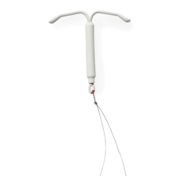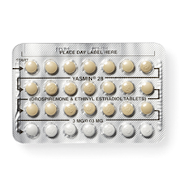How I dumped the pill and met the IUD
Two weeks ago, I ended my longest and most tumultuous relationship to date.

By Lena Chen. Slightly amended from the original version published on November 4, 2009, on SexReally.com.
Two weeks ago, I ended my longest and most tumultuous relationship to date. Four years and hundreds of dollars after my first prescription, I decided that I had swallowed my final birth control pill. I tossed out my last packet, lay back in stir-ups, and got an IUD.
It was a long time coming. I was never one of those people who had trouble remembering to take my birth control. For someone who constantly loses track of time and deadlines, I was remarkably good at never forgetting to pop a pill before bed. But though I wasn’t worried about messing up and becoming pregnant, I was getting concerned about my libido. I once boasted an impressive sexual appetite, but the birth control I switched to a year ago made my sex drive plummet lower than the DOW. This was already the fourth or fifth prescription I’d tried in as many years. I wasn’t interested in shopping around for a new brand. I wanted a no-hassle, semi-permanent solution, preferably one that cost less than the $10/month generic pill I was on.
I found my partner in crime in the IUD. I’m embarrassed to admit that I didn’t even know what an IUD was until I started getting dissatisfied with the pill. My ignorance isn’t surprising. Despite being the most popular form of reversible birth control in the world, IUDs are not very common in the United States, in part because of the stigma associated with the Dalkon Shield, a defective device that was linked to widespread sterility in the 70s. The IUD’s public image never quite recovered, and the pill remains the most popular contraceptive option in America. Recently, however, more and more women have begun to consider it, especially since the invention of the Mirena, an IUD that decreases menstrual flow and symptoms and is low-hormone compared to the pill. I first learned about the Mirena after my friend Christine got it, but I assumed most women, including my other acquaintances, were on the pill or using condoms. When I began to debate the merits of switching to the IUD, comments trickled in from friends and blog readers who had explored that option themselves. To my surprise, several close friends and even my mother (in her young adulthood!) were IUD users.
The IUD is a T-shaped device placed inside the uterus through the cervix. Its presence destroys sperm and/or obstructs their movement, making it difficult for them to fertilize an egg. A simple explanation: it functions like a landmine against invading soldiers (see a more detailed explanation of the types of IUDs available in the U.S. and how they work). The IUD is as effective as sterilization, with an annual failure rate of less than one percent. It can also be much more affordable since many insurance policies completely—or mostly—cover the IUD and the appointment for insertion.* More importantly, the IUD has a much lower level of hormones than the pill, providing hope that my long stifled sex drive could finally make a comeback.
Whether or not you want to consider an IUD, don’t feel like you’re trapped if you’re dissatisfied with your current contraceptive method. I stuck with one option for far too long before I talked to other women and to a gynecologist about other possibilities. It’s a shame that many women aren’t aware of all the available choices before hopping on the birth control bandwagon. Contraception, like a relationship, is something you shouldn’t settle on.
*Editor’s Note: This article was written before the Affordable Care Act made it so that all insurance plans must cover all birth control methods without any out-of-pocket costs. As of 2015, getting an IUD should be totally covered by health insurance!
—
Lena Chen is a blogger, writer and speaker on sex, gender and feminism. Her writing has been featured in The New York Times and Newsweek.
How do you feel about this article?

Heat up your weekends with our best sex tips and so much more.

